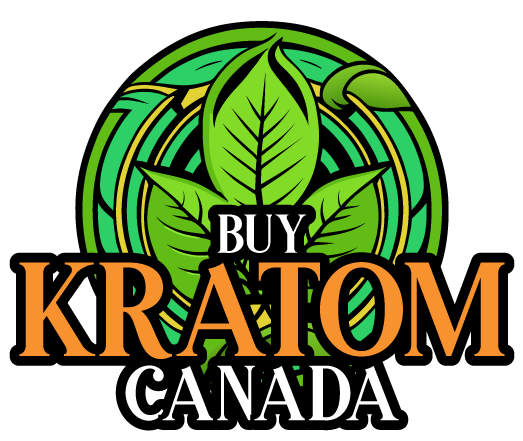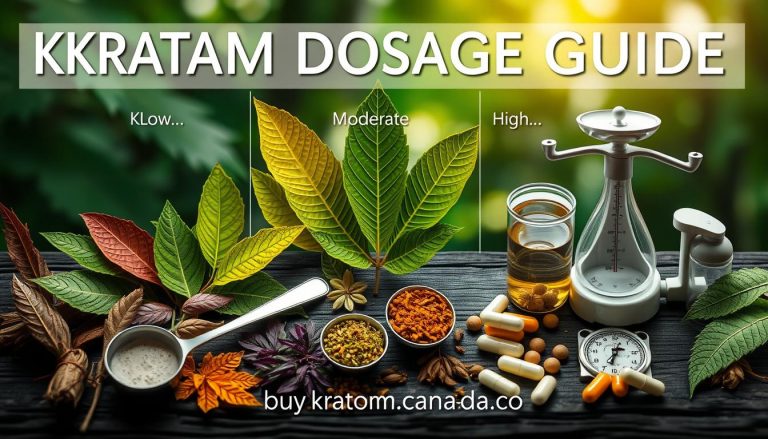Understanding Kratom Alkaloids: How They Affect Your Body
Are you curious about kratom alkaloids and how they affect your body? Exploring these natural compounds can reveal their potential benefits and safety. As kratom use grows, it’s key to look into the science behind its main alkaloids. These include mitragynine, 7-hydroxymitragynine, speciogynine, paynantheine, corynoxeine, and corynantheidine. Let’s uncover how these molecules can impact your health.
Key Takeaways
- Kratom alkaloids like mitragynine and 7-hydroxymitragynine show strong pain-relieving and pain-inhibiting effects.
- They work with opioid receptors in the body, which may help with substance use disorder and chronic pain symptoms.
- Kratom alkaloids also affect other neurotransmitter systems. This could lead to mood boosts and reduced anxiety.
- Knowing how kratom alkaloids are metabolized and bind to receptors is important for their safety and drug interactions.
- Regulations and laws on kratom differ by region. This calls for more research and wise choices.
Introduction to Kratom Alkaloids
Kratom comes from the leaves of the Mitragyna speciosa tree. It has become popular in recent years. The plant’s unique chemical makeup, especially its alkaloids, is key to its effects.
These alkaloids, like mitragynine and 7-hydroxymitragynine, are what make kratom special. They affect the human body in remarkable ways.
Chemical Structures of Major Alkaloids
Mitragyna speciosa grows in Southeast Asia, the Philippines, and New Guinea. It belongs to the Rubiaceae family. The two main kratom alkaloids, mitragynine and 7-hydroxymitragynine, are found only in this plant.
Mitragynine was first found in 1921. Its structure was fully understood in 1964. On the other hand, 7-hydroxymitragynine was discovered in 1993. It is present in very small amounts.
The structures of these kratom alkaloids are complex. Their synthesis is too complicated for mass production. This makes kratom unique and interesting to study.
“The chemical structures of these kratom alkaloids are complex, and their total syntheses reported in scientific literature are considered too intricate to be viable for large-scale economic production.”
Metabolism of Kratom Alkaloids
It’s important to understand how kratom alkaloids are broken down in our bodies. Studies have shown the detailed ways these compounds are processed. This includes mitragynine, speciogynine, and others.
Research on rats and humans shows that these alkaloids go through phase I and phase II metabolism. The breakdown of kratom alkaloids involves several steps. These include changes like hydrolysis and oxidation, leading to the formation of glucuronide and sulfate conjugates.
This complex process affects how the alkaloids work in our bodies. It also changes how they interact with enzymes. Knowing this is key for researchers and doctors to understand kratom’s effects.
As kratom use grows, studying its breakdown is more important than ever. This knowledge helps make kratom safer and more effective. It also guides rules on using this plant.
Receptor Binding and Pharmacological Effects
Kratom’s effects in humans come from how its key alkaloids, mitragynine and 7-hydroxymitragynine, bind to receptors. These alkaloids work as full agonists at the μ-subtype opioid receptor (MOR). This is why kratom helps with pain and makes people feel relaxed.
Research shows that kratom’s effects can be blocked by naloxone, an opioid receptor antagonist. This means opioid receptors play a big role in how kratom works. Other receptors, like 5-HT2a and α2-adrenergic receptors, also help explain kratom’s complex actions.
The amount of kratom you take affects how it makes you feel. Small amounts can make you feel more alert, while bigger doses can make you feel sleepy. This is important to know when thinking about using kratom for health reasons or to avoid its risks.
“The receptor agonist effect of kratom alkaloids is antagonised by the opioid receptor antagonist naloxone, indicating the involvement of opioid receptors in the unique pharmacological and behavioural activity of mitragynine.”
The way kratom’s alkaloids bind to receptors is key to understanding its effects. Knowing how mitragynine and 7-hydroxymitragynine work is essential. It helps us see both the good and bad sides of using kratom.
Analgesic and Antinociceptive Properties
Kratom comes from the Mitragyna speciosa plant. It’s known for its pain-relieving effects. The compounds in kratom, like mitragynine and 7-hydroxymitragynine, have been studied a lot. They are compared to codeine and morphine in research.
Kratom Alkaloids Rival Codeine and Morphine
Studies show mitragynine works like codeine in animals. 7-hydroxymitragynine is even stronger than morphine, even when taken by mouth. This matches what kratom users say about using it for pain.
“The analgesic properties of kratom alkaloids like mitragynine and 7-hydroxymitragynine are truly remarkable, rivaling the effectiveness of traditional opioid painkillers like codeine and morphine.”
Kratom’s pain-relieving qualities are important for managing pain. It might be a good choice instead of opioids. More research is needed to understand kratom’s role in treating pain and other conditions.
Understanding Kratom Alkaloids: How They Affect Your Body
Kratom, a plant from Southeast Asia, has many alkaloids that affect our bodies in interesting ways. Two key alkaloids are mitragynine and 7-hydroxymitragynine. Each has its own effects on us.
At low doses, kratom acts as a stimulant. It helps fight tiredness and boosts energy. This is mainly thanks to mitragynine, which makes us feel alert and focused. But, at higher doses, kratom can make us feel sedative-narcotic. This is because 7-hydroxymitragynine takes over, leading to a more relaxed state.
“Regular kratom use may produce dependence, with withdrawal symptoms that are relatively mild and typically diminish within a week, including craving, weakness and lethargy, anxiety, restlessness, rhinorrhea, myalgia, nausea, sweating, muscle pain, jerky movements of the limbs, tremor as well as sleep disturbances and hallucination.”
It’s important to know how kratom’s alkaloids affect the body. Whether you want the stimulant effects of mitragynine or the sedative-narcotic properties of 7-hydroxymitragynine, be aware of the risk of dependence and withdrawal. These can happen with regular use.
Knowing the effects of kratom alkaloids on the body helps us make better choices. It’s useful whether you’re looking for a natural energy boost or exploring kratom’s potential health benefits. Understanding its alkaloids is essential for a safe and responsible use.
Potential for Dependence and Withdrawal
Kratom is seen as a natural, safer choice than traditional opioids. But, regular use can lead to dependence. Stopping kratom can cause withdrawal symptoms, which, while milder than other opioids, can still be tough for some.
Kratom withdrawal symptoms may include:
- Craving
- Weakness and lethargy
- Anxiety
- Restlessness
- Rhinorrhea (runny nose)
- Myalgia (muscle pain)
- Nausea
- Sweating
- Tremor
- Sleep disturbances
- Hallucinations
These symptoms usually fade within a week after stopping kratom. Sometimes, medical help is needed to manage withdrawal. Treatment might include dihydrocodeine, lofexidine, and other medications.
“Kratom dependence is a real issue, but the withdrawal symptoms are generally less severe than those associated with traditional opioids. With the right support and management, individuals can overcome kratom addiction and regain control of their lives.”
Knowing about kratom dependence and withdrawal is key. Using it responsibly and getting help when needed can reduce risks. This includes dependence, withdrawal, and addiction risks.
Drug Interactions and Safety Considerations
Kratom is a natural herb from the Mitragyna speciosa tree. It’s used as a natural remedy for many health issues. But, it’s important to know how kratom interacts with other drugs. This is because using kratom with other substances can be dangerous.
Kratom and Concomitant Drug Use
Using kratom with other drugs can cause serious side effects. There have been reports of bad reactions when kratom tea is mixed with certain drugs. In one case in the U.S., a mix of kratom, fentanyl, and other substances was fatal.
Kratom can also be harmful to animals. Studies in mice showed that long-term use of kratom can lead to addiction and withdrawal. This shows why it’s crucial to know the risks of using kratom with other drugs.
“The consumption of kratom concomitantly with other drugs can provoke serious side effects.”
If you’re thinking about using kratom, you should know about the risks. It’s important to understand the kratom drug interactions and the safety of kratom when used with other drugs. Always talk to a healthcare professional before using kratom with other medications. This ensures your safety and well-being.
Regulatory Status and Legal Considerations
Kratom’s legal status changes from country to country. In the U.S., the FDA has put out alerts on kratom supplements and ingredients. Some states have banned or put rules on kratom use.
The dried kratom leaves, sold in shops and online, come from Southeast Asia, mainly Indonesia. There, the plant is not controlled, making it available. But, laws are changing as governments look into kratom’s risks and benefits.
For those in Canada thinking about trying kratom, knowing the latest laws is key. The team at buykratomcanada.co keeps up with kratom laws and ensures their products are safe and high-quality. By staying informed and buying from trusted sources, users can make smart choices about their health.








